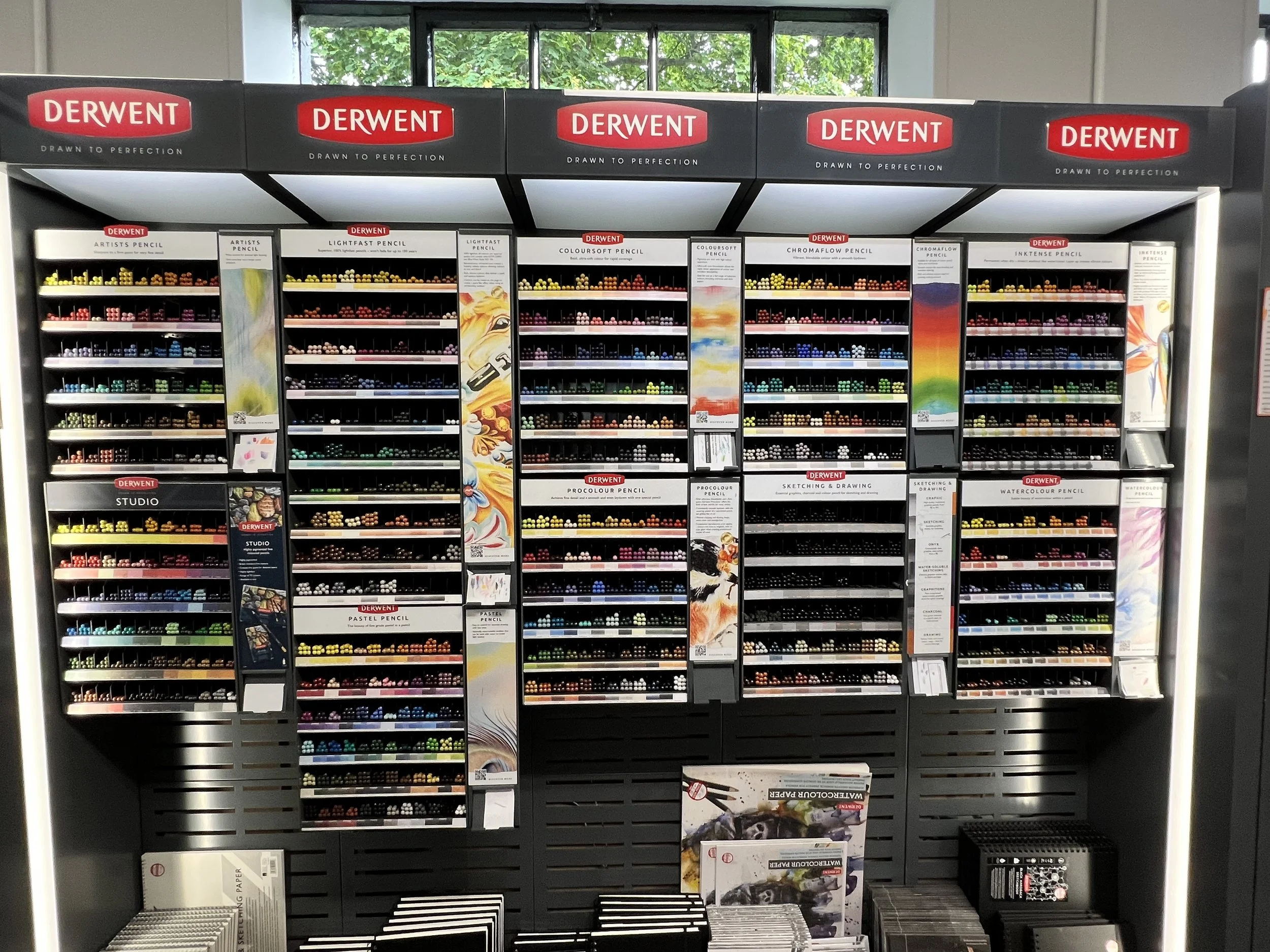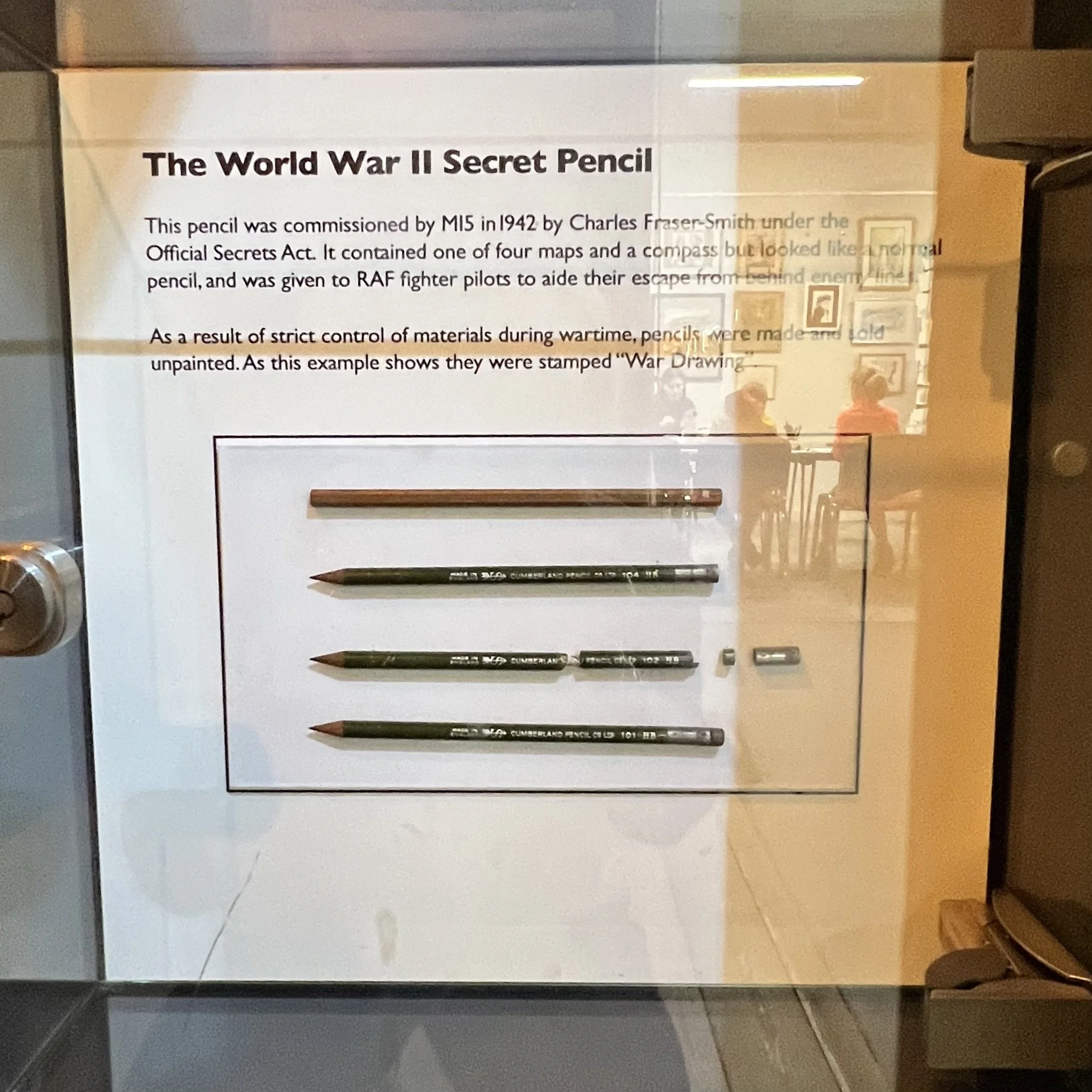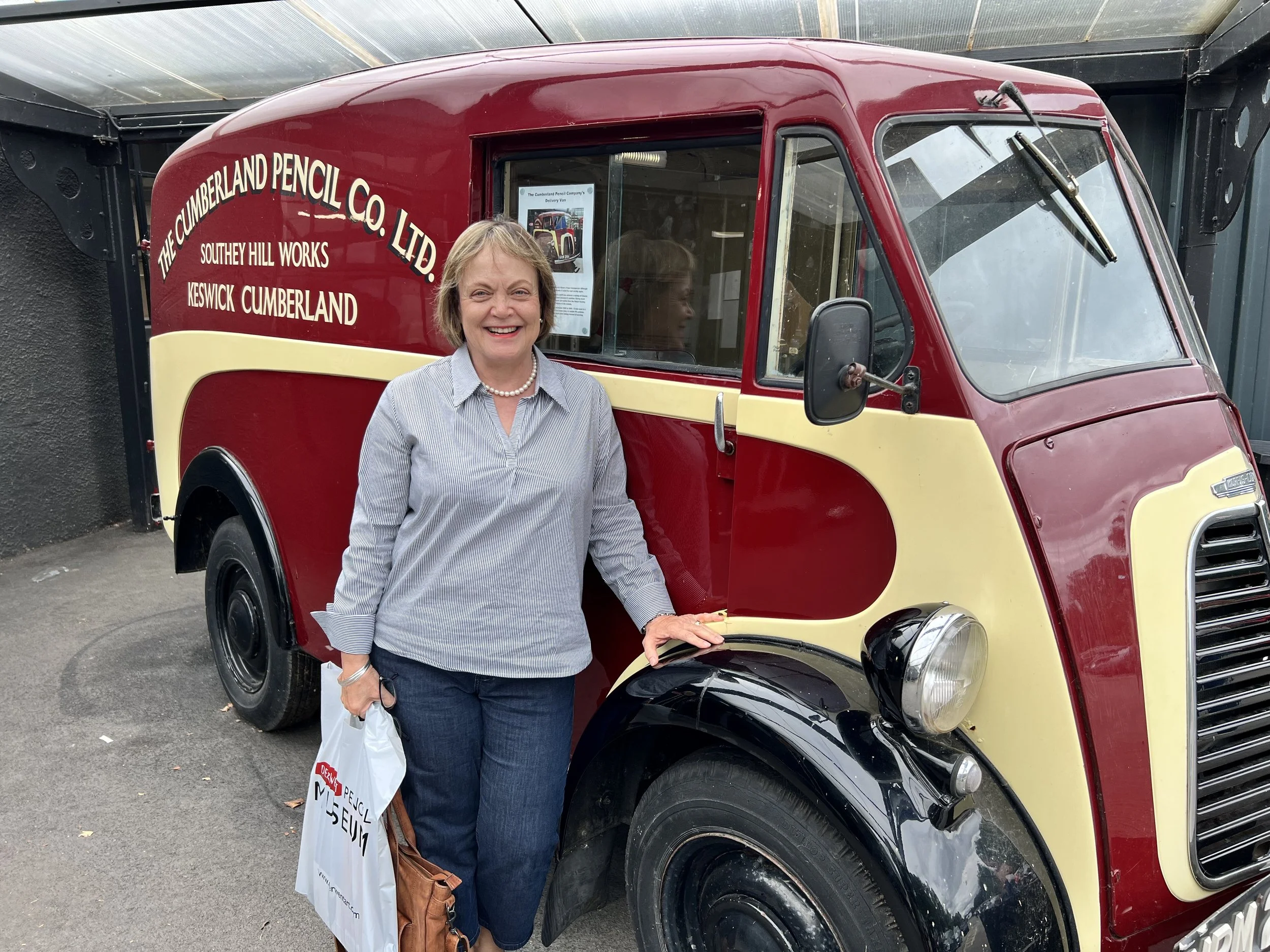The Wonderful Pencil
Have you ever wondered about the origin of the pencil? A recent visit to the Derwent Museum in the Midlands made me very curious, prompting further investigation!
The story starts with a legend: it is said, in the mid -16th century, a storm uprooted a tree in England's Lake District. Attached to the roots of the tree was a black substance, graphite! Whether this is true or not, is debatable. But a few decades later, this site became the first commercial graphite mine.
The Swiss scientist/naturalist, Conrad Gessner, published a drawing of strips of graphite in a tube of wood in 1565. It is said that Nuremberg, Germany, was the birthplace of mass-produced pencils, when in 1662 graphite sticks were wrapped in string and inserted into hollowed out wood. Nicholas-Jacques Conte, a scientist serving in the army of Napoleon Bonaparte, developed the process further. In 1794/5, he grounded graphite, mixed it with wet clay, shaped the mixture into rods and then baked them. This was called "Crayons Conté".
This development led to years of experiments with German companies (Faber-Castell, Lyra, Staedtler and others) being very active in the area. They tried out different proportions of clay and graphite to achieve harder and softer pencils.
Pencil making wasn’t confined just to Europe. William Monroe, a Massachusetts cabinetmaker, is said to be America’s first wood pencil maker. Charles Dunbar, found a graphite deposit in New Hampshire and started making pencils with his brother-in-law, John Thoreau. John's son, David, developed new techniques that improved the quality of the pencils. The company started to number pencils according to their softness/hardest with No. 1 being the softest to No. 4, the hardest. This numbering system was the beginning of the pencil numbering system that we still use today.
Did you know that there are two graphite grading scales that are in use to measure the hardness of a pencil’s graphite core? The first is a numeric scale where the hardness of the core is marked on the pencil; the higher the number, the harder the writing core, and the lighter the mark left on the paper and vice versa. The second grading scale is known as the HB scale, with the letter “H” indicating a hard pencil, “B” the blackness of the pencil mark and the letter “F” to indicate that the pencil sharpens to a fine point.
A few fun facts:
The transition from hand manufactured pencils to mechanical produced pencils took place during the Industrial Revolution.
Derwent manufactured a pencil with a secret map and compass in 1942 to help the war effort.
The phrase “black market” comes from the act of smuggling graphite; the graphite marked the hands of the smugglers, so all knew what they were doing.
There are 14 steps in the creation of a pencil.
It is said, on average, a pencil can be sharpened 17 times, draw a line 35 miles long and can write approximately 45,000 words.
The contents of a pencil often is referred to as ‘lead’, pencils do not actually contain any. To this day most pencils contain a mixture of graphite and clay.




